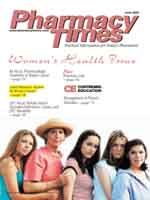Publication
Article
Pharmacy Times
Twins Are More Likely
Author(s):
According to a recent research letter in the Journal of the American Medical Association, a Danish study has found that women with a body mass index (BMI) of 30 or higher?in the obese range?are slightly more likely to have twin babies than are normal or underweight women. Researchers also found that the twins of obese women were more likely to be opposite-sex twins than same-sex twins. The purpose of the study was to determine why the rate of twin births declined from the 1950s through the 1970s and increased in the 1980s.
The study team analyzed more than 55,000 births from 1988 to 2001. Among women not being treated for infertility, the rate of twin births was 1.5 times higher among women with a BMI greater than 30, compared with women with a lower BMI. The obese women were also 1.5 times more likely to have opposite-sex twins. Lead author Dr. Olga Basso theorized that the rise in twin births may parallel the rise in obesity. In the early 1960s, only 9.3% of American women were considered obese, whereas, by 2000, 28.4% of women had a BMI of 30 or more. A variety of factors are believed to cause twin births, including maternal age, family history, race, and possibly height and weight. Dr. William Bates, professor of obstetrics and gynecology at Vanderbilt University, speculated that, because overweight women have higher levels of luteinizing hormone, which triggers ovulation, these women may release 2 eggs at once during a monthly cycle. Both Drs. Bates and Basso warn that losing or gaining weight will not likely affect the odds of having twins.







